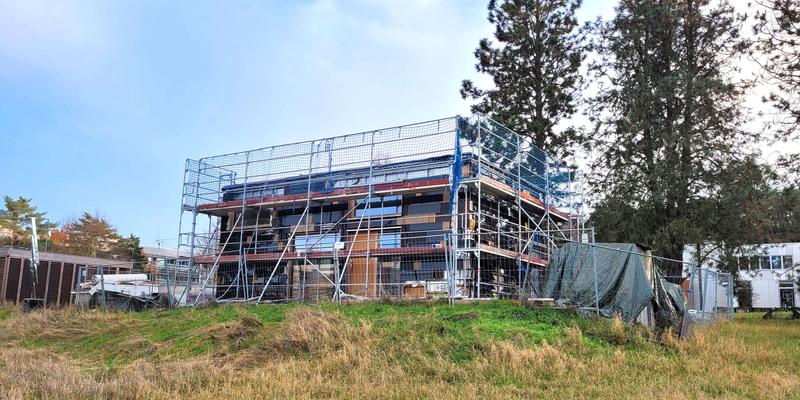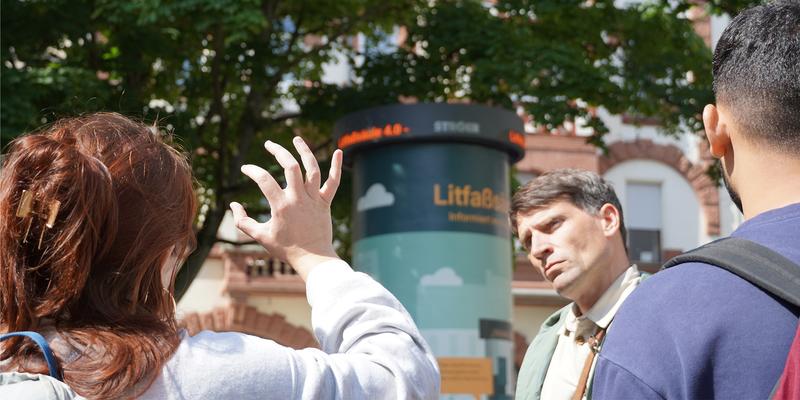A lot has happened at the eHUB. The conversion and renovation of the former Solar Decathlon Haus of TU Darmstadt into the new emergenCITY eHUB started last fall and is progressing well so far. After the renovation work, the emergenCITY cross-cutting mission of the same name – Mission eHUB – will move into the building. The mission will use the eHUB for research on the crisis scenario of a supra-regional power blackout lasting several days. Because while electricity grids are becoming more vulnerable to blackouts due to faltering expansion, increasing digitalization, a high proportion of renewable energies and Europe-wide interconnection, a large part of the population is not well prepared for this crisis scenario. The eHUB therefore aims to strengthen crisis prevention and combine it with a resilient and equitable design of the energy transition.
The eHUB mission will research how owners of photovoltaic systems can realize a self-sufficient emergency power supply with little effort and at favorable conditions. In addition, the eHUB will provide new insights into the possibilities of incorporating existing devices, such as e-vehicles or smart home hardware and software, into efficient energy contingent use. Besides that, the mission is about developing concepts for the general public. Electricity-autonomous buildings such as the eHUB could, for example, become a hub for various needs of the neighboring population in the event of a crisis: As an emergency power source, as an information and emergency communication hub, or as a command center.
Already in the Solar Decathlon House, energy consumption was minimized and the photovoltaic systems on the facade and roof were able to produce twice the amount of energy consumed by the building itself. Now the building is being renovated and upgraded with some structural changes and technical enhancements. The construction work included work on the base, the facade and a complete rebuild of the roof. For a long time, the building was covered by a large tarp and could not be seen from the outside. But in the meantime, a lot has happened and the renovation of the roof has been completed. In the next step, the photovoltaic modules will be installed on the roof again – there they are already waiting.
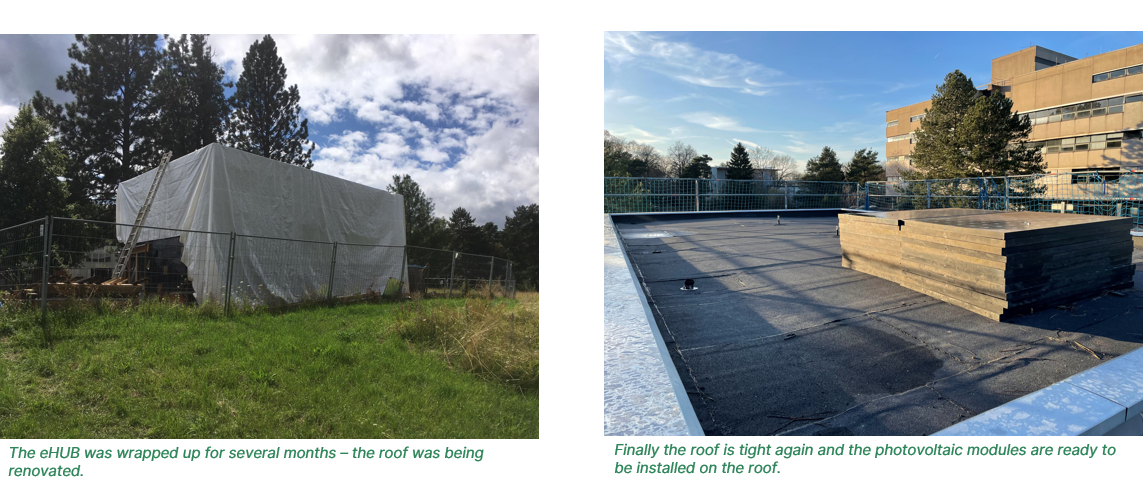
eHUB Renovation under the Banner of Sustainability
During the conversion to the eHUB, emphasis is placed on a sustainable approach – as many building materials as possible are to be reused in whole or in part. In this, emergenCITY is supported by the University Sustainability Group of the TU Darmstadt, which is committed to sustainability in a variety of projects in Darmstadt and the surrounding area. What cannot be reused in the eHUB finds a new purpose with the university group. For example, the large tarp that covered the eHUB for several months until the roof renovation was completed went to the student group.
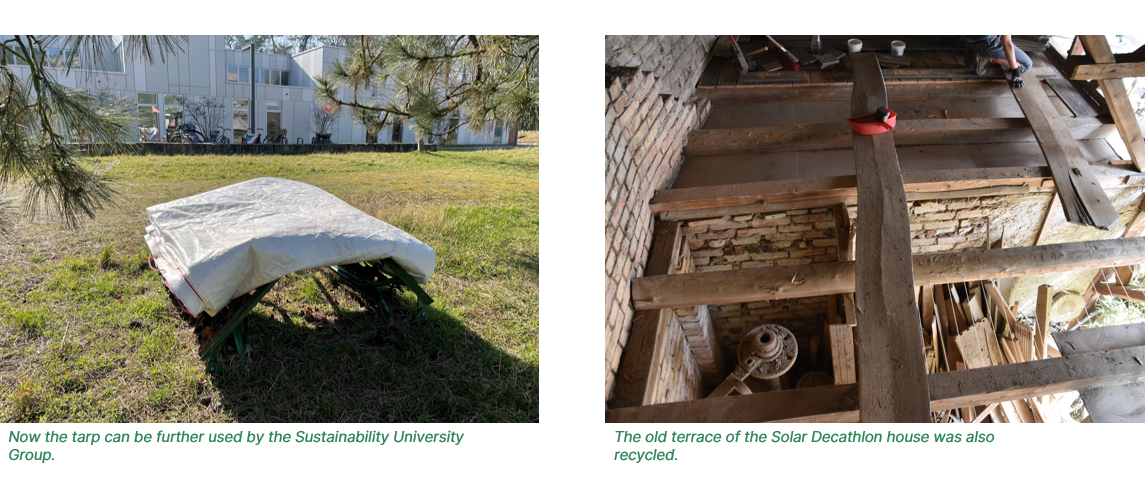 The timbers from the deconstruction of the terrace could also be processed by the student group. These were enough for the floor of a barn, for the lining of a water tank on the campus Lichtwiese, for the construction of a raised bed on the roof terrace of a retirement home and even for the construction of a cupboard for foodsharing.
The timbers from the deconstruction of the terrace could also be processed by the student group. These were enough for the floor of a barn, for the lining of a water tank on the campus Lichtwiese, for the construction of a raised bed on the roof terrace of a retirement home and even for the construction of a cupboard for foodsharing.
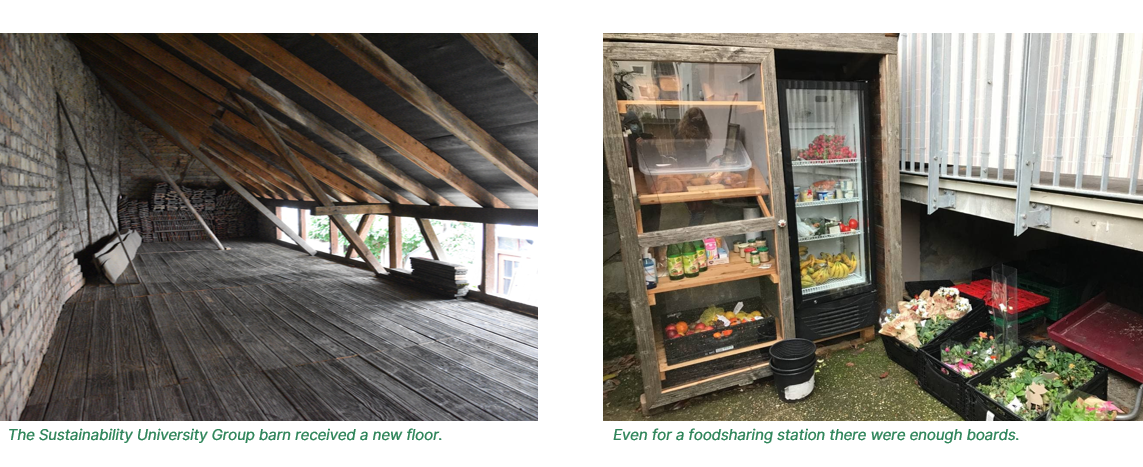
Donation for Research
Support for the eHUB is also coming from the business community. The facade of the Solar Decathlon house consists of solar panels and fascia panels, parts of which need to be replaced. The fascia panels are made of PLEXIGLAS®, which is manufactured by the Röhm company in Darmstadt. The company has now given a generous discount on orders for the new PLEXIGLAS® panels as a donation to research. In addition to the discount, Röhm has also provided the eHUB with free samples and technical advice in advance of installing the new PLEXIGLAS® panels. When asked by the mission, Röhm was even able to say what grade and color the old panels were. So now nothing stands in the way of the new facade.
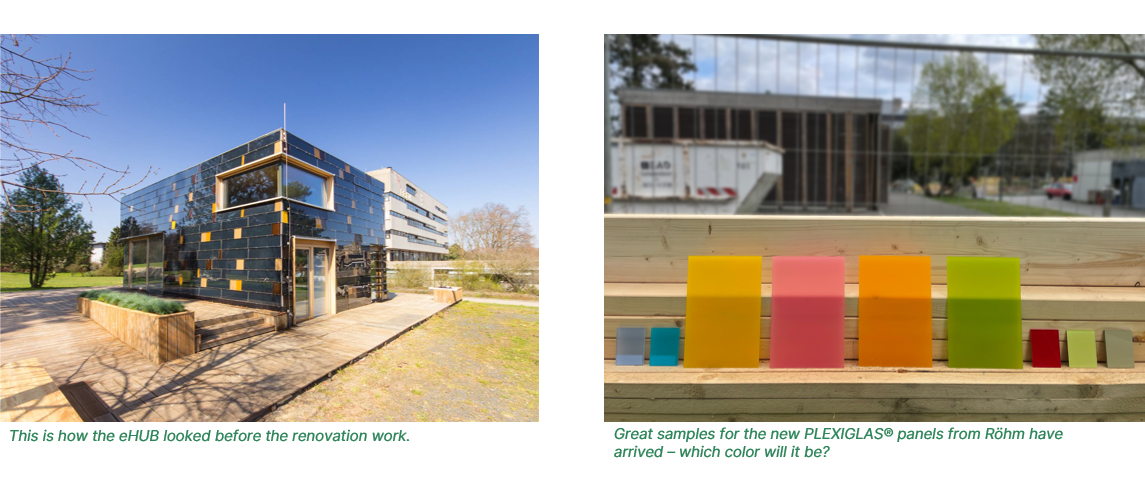 After completion of the renovation work, it is planned that the eHUB will also be open to visitors on regular opening days in demonstrator mode. In this way, the findings of the research on disaster prevention and emergency power operation can be shared directly with citizens and cities.
After completion of the renovation work, it is planned that the eHUB will also be open to visitors on regular opening days in demonstrator mode. In this way, the findings of the research on disaster prevention and emergency power operation can be shared directly with citizens and cities.
